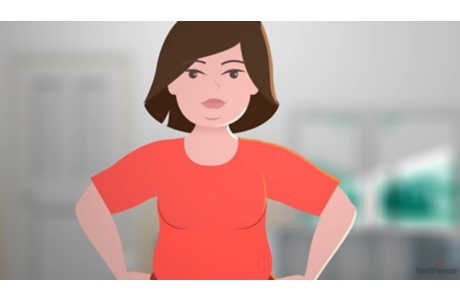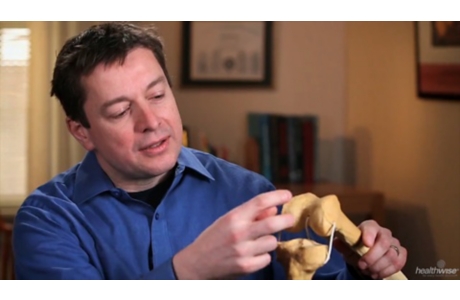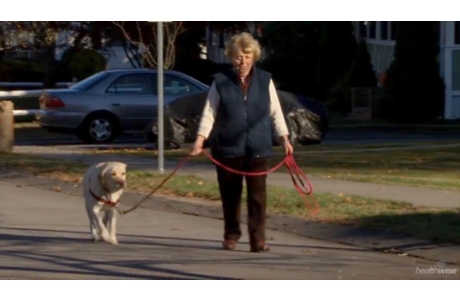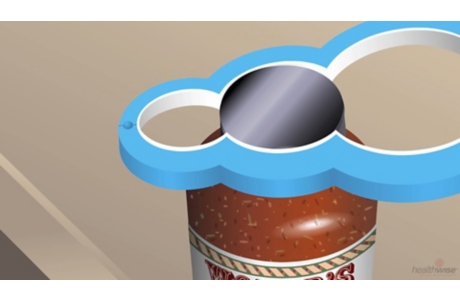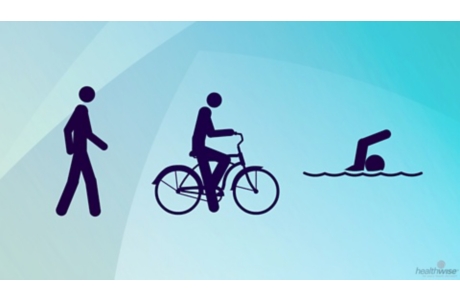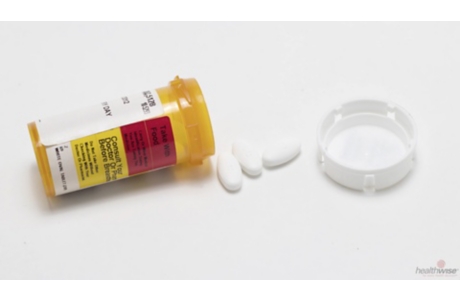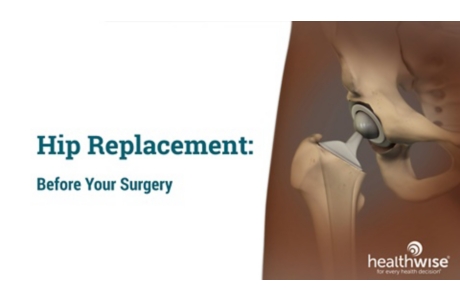Condition Basics
What is osteoarthritis?
Osteoarthritis is the type of arthritis that many people get as they age. It can happen at any age, but it is most common in older adults. Osteoarthritis is usually called arthritis.
Arthritis happens when the cartilage that cushions your joints gradually breaks down. A joint is any place where two or more bones connect, like the knee, hip, wrist, or shoulder. When the cartilage wears down, the bones rub against each other. This causes damage and pain.
What causes it?
When you have arthritis, the cartilage that cushions and protects your joints breaks down and wears away. When it breaks down, the bones rub together and cause damage and pain. Experts don't know why this breakdown in cartilage happens.
In some cases, arthritis is caused by other conditions that damage cartilage.
What are the symptoms?
The symptoms of arthritis include pain and stiffness in the joints. Arthritis also makes it harder to bend the joint or get the full range of motion you used to have. The symptoms may be mild to severe.
How is it diagnosed?
Your doctor can often diagnose arthritis by asking you questions about your joint pain and other symptoms and examining you. You may also have X-rays and blood tests. Blood tests can help make sure another disease isn't causing your symptoms.
How is osteoarthritis treated?
Treatment for arthritis includes pain medicines and self-care. Self-care includes exercise and activity, staying at a healthy weight, putting ice or heat on a sore joint, and resting. You may also use devices and tools designed to make everyday tasks easier on your joint.
Treatment with medicines usually starts with over-the-counter medicines. Your doctor also may recommend different or stronger medicines.
You may need to try several types of treatment to find what works for you. If your pain doesn't get better with treatment, you may decide to have surgery.
There is no cure for arthritis. But treatment can help slow or limit the breakdown of cartilage and help you reduce your pain and continue to lead an active life.
Health Tools
Health Tools help you make wise health decisions or take action to improve your health.
What Increases Your Risk
You're more likely to have arthritis if:
- You're overweight.
- Extra weight adds stress on your joints and can change the normal shape of the joint.
- You have or had a joint injury.
- A single major injury to a joint or several minor injuries can cause cartilage damage over time.
- You're not active.
- Lack of exercise can cause your muscles and joints to get weak and stiff.
- You have a family history of arthritis.
- If someone in your family has arthritis, you may be more likely to have it too.
Other things that may put you at risk include:
- Getting older.
- Age isn't a direct cause of arthritis. But as you get older, you're more likely to have symptoms.
- Loose or odd-shaped joints.
- Knees that bend outward (bowleg) or knees that bend toward each other (knock knees), for example, can cause an imbalance in the joints because the cartilage wears down at an uneven rate.
Prevention
You can take steps to help prevent arthritis. If you already have arthritis, these same steps may keep it from getting worse.
- Stay at a healthy weight or lose weight if you need to.
-
Extra weight puts a lot of stress on the large, weight-bearing joints such as the knees, the hips, and the balls of the feet. Losing even a few pounds can take stress off your joints.
- Be active.
- A lack of exercise can cause your muscles and joints to become weak. But light to moderate exercise can help keep your muscles strong and reduce joint pain and stiffness. For example, if your quadriceps (the muscles in the front of your thigh) are weak, you may be more likely to get arthritis of the knee.
- Protect your joints.
- A single major injury to a joint or several minor injuries can damage cartilage over time. Try not to do tasks that cause pain or swelling in joints. And try to use the largest joints or strongest muscles to do things.
Learn more
Watch
Symptoms
When you have arthritis, even simple, everyday movements can hurt. Walking a few steps, opening a door, and even combing your hair can be hard. Symptoms may be mild to severe and may include:
- Pain in your joints.
- Stiffness when you get up in the morning.
- Muscle weakness around the joints.
- Swelling in the joints.
- Joints that are deformed and look like they are the wrong shape.
- Reduced range of motion and loss of use of the joint.
- Cracking and creaking in your joints.
- Sleep problems.
You can have symptoms in any joint. But they most often occur in the hands, hips, knees, feet, and sometimes the spine. Most often, arthritis only occurs in one set of joints, such as the knees. But it may affect more than one area of the body, such as both the knees and the hands.
Learn more
What Happens
It's hard to know if and how fast arthritis will get worse. Symptoms may come and go, stay the same, or get worse over time.
At first, you may have pain only when you are active. Over time, you may also have pain when you are resting. Joints can become stiff, and you may lose the full range of motion you used to have. Joints can become misshapen over time, especially the small joints of the hands and feet.
If you have arthritis in your fingers, the joints at the tip or middle part of your fingers may get bigger and form bumps. These are known as Heberden's and Bouchard's nodes.
Arthritis of the spine can also narrow the openings that make space for the spinal cord and for the nerves that branch off the spinal cord (spinal nerves). This narrowing is called spinal stenosis. It can lead to pressure on the spinal cord or spinal nerves. This pressure can cause pain, weakness, or numbness.
Even though there is no cure for arthritis, most people can manage their symptoms with medicine and lifestyle changes. But in some people, arthritis may get painful enough that they decide to have surgery.
Watch
When to Call a Doctor
Call your doctor if you have:
- Sudden, unexplained swelling, warmth, or pain in any joint.
- Joint pain with a fever or rash.
- Pain so bad that you can't use your joint.
- Mild joint symptoms that last more than 6 weeks and don't get better with home treatment.
- Side effects from pain medicine. You can have side effects when you take large doses of pain medicine. Do not take more than the recommended dose of medicine without first talking to your doctor.
Watchful waiting
If you have mild joint pain and stiffness, first try home treatment, such as using ice and heat. If you don't feel better in 6 weeks, or if you have other symptoms, call your doctor.
Exams and Tests
Your doctor can often diagnose arthritis by examining you and asking questions about your joint pain, when it started, and when it happens. Your doctor will also ask if you've had a fever or weight loss. Your answers help your doctor make sure that something else is not causing your symptoms.
You may also have an X-ray (such as an X-ray of the hip or knee) or other imaging tests to check for joint damage.
Other tests, such as a joint-fluid analysis and urine or blood tests, may be used to see if there are other causes for your pain, such as rheumatoid arthritis or an infection. These tests often aren't needed.
Learn more
Treatment Overview
There is no cure for arthritis. But treatment can help slow or limit the breakdown of cartilage and help you reduce your pain and continue to lead an active life.
The goals of treatment are to:
- Reduce your pain and stiffness.
- Keep your joints working and moving well.
- Keep you from becoming disabled.
- Prevent more damage to your joints.
There are many treatments for arthritis. You may need to try several different ones to find what works for you.
Treatment for mild to moderate arthritis
In most cases, people who have mild to moderate arthritis can manage their symptoms for many years with treatment. A treatment plan may include:
- Pain medicines.
-
These include nonsteroidal anti-inflammatory drugs (NSAIDs), such as ibuprofen (Advil or Motrin) or naproxen (Aleve). Acetaminophen, such as Tylenol, may also help. Or you may use a topical medicine such as capsaicin cream on your skin.
- Physical therapy or occupational therapy.
-
Physical therapy can help with pain and how well you get around. Occupational therapy helps you live as independently as possible.
- Self-care.
-
Self-care is also an important part of your treatment. It may include:
- Getting rest.
- Being active.
- Staying at a healthy weight.
- Putting ice or heat on a sore joint.
- Using assistive devices such as reachers or a cane.
- Changing activities or the way you do things.
Treatment if arthritis gets worse
If the pain and stiffness from arthritis don't get better or they get worse, your doctor may recommend:
- Steroid shots in the joint to reduce swelling.
- Pain medicine called tramadol.
- An antidepressant, such as duloxetine, to help relieve pain.
- Physical therapy or occupational therapy.
In most cases, people can manage their arthritis symptoms with medicine and lifestyle changes. But surgery may be an option if you have very bad pain, you have lost a lot of cartilage, or you have tried medicine and other treatments but they haven't helped.
Some types of surgery include:
- Arthrodesis.
- Arthroscopy.
- Finger or toe surgery.
- Joint replacement (hip, knee, or shoulder).
- Osteotomy (knee or hip).
Learn more
Watch
Self-Care
You can do a lot to manage the symptoms of arthritis and help prevent the disease from getting worse. Steps you can take include:
Lifestyle changes
- Rest.
-
If your joints hurt a lot or are swollen, take a break. But not for too long—a lack of activity can cause your muscles and joints to become weak.
- Get enough sleep.
-
Good sleep can help your mood and help you cope with pain.
- Stay at a healthy weight or lose weight if you need to.
-
Losing weight can decrease the symptoms of arthritis and allow you to be more active. A healthy weight is very important if you have arthritis in the legs or feet.
- Get exercise.
-
Exercise and activity can help reduce pain and improve balance. Try exercises that don't put a lot of stress on your joints, such as swimming or walking.
Pain relief
- Use medicine.
-
If your pain is mild, over-the-counter pain medicines may help. These include nonsteroidal anti-inflammatory drugs (NSAIDs), such as ibuprofen (Advil or Motrin) or naproxen (Aleve). Acetaminophen, such as Tylenol, may also help.
- Use heat and cold therapy.
-
For example, you might try warm compresses or cold packs. But don't use heat if the joint is swollen or hot.
Devices
- Use assistive devices and orthotics.
-
They can take the stress and weight off your joints and make it easier for you to hold objects, open and close things, and walk. For example, raised toilet seats, doorknob covers, braces, and canes may help.
Changing how you do things
- Protect your joints.
-
For example, you can use the largest joints or strongest muscles to do things. When you lift a heavy object off the floor, use your hip and knee muscles, not your back.
- Change activities.
-
If your joints hurt when you do an activity, try other ways of doing it that don't cause pain. For example, walk instead of jog. Or use a sewing machine to make a quilt instead of making it by hand.
- Modify your home and work area.
-
For example, use a reacher to pick up things off the floor. Or, instead of standing up at the counter, use a tall stool so you can sit down.
- Maintain good posture.
-
Poor posture puts stress on your back and neck. Having good posture can help reduce pain.
- Wear comfortable and supportive shoes.
-
If you have arthritis in your back, hips, knees, or feet, you may be able to reduce the stress on your joints by wearing the right shoes or by adding insoles to your shoes.
Get support
Living with arthritis can be stressful. But there are a lot of ways to cope with arthritis. For example, you could try asking for help when you need it, keeping a positive attitude, and maybe joining a support group.
Learn more
Watch
Medicines
Medicine can help reduce your symptoms of arthritis and allow you to do your daily activities. But medicine doesn't cure arthritis or slow the time it takes for cartilage to break down.
Medicines that work for some people don't work for others. Be sure to let your doctor know if the medicine you're taking doesn't help. You may need to try several kinds of medicines to find one that works for you.
The goal of medicine is to:
- Manage pain with the fewest side effects.
- Keep your joints working and moving well. If pain keeps you from moving your joints, it can cause the ligaments, tendons, and muscles that move your joints to shorten and become tight and weak.
The type of medicine depends on how bad your pain is. For example:
- For mild to moderate pain, you can try over-the-counter pain medicine. These include nonsteroidal anti-inflammatory drugs (NSAIDs) such as ibuprofen (Advil or Motrin) or naproxen (Aleve). Acetaminophen, such as Tylenol, may also help.
- For moderate to severe pain, you may need stronger pain medicine, such as opioids.
Medicine choices
Medicines used to treat arthritis include:
- NSAIDs to reduce pain and swelling.
- Acetaminophen to help relieve pain.
- Tramadol to help relieve pain.
- Steroid shots in the joint to reduce swelling.
- Some antidepressants, such as duloxetine, to help relieve pain.
- Opioids to relieve severe pain.
Medicine that you put on your skin (topical) may relieve pain for a short time. These include topical NSAIDs, capsaicin, and pain-relieving creams.
Learn more
Watch
Surgery
In most cases, people can manage their arthritis symptoms with medicine and lifestyle changes. But surgery may be an option if:
- You have very bad pain.
- You have lost a lot of cartilage.
- You have tried medicine and other treatments, but they haven't helped.
- Your overall health is good.
Surgery choices
Types of surgery for arthritis include:
- Arthrodesis.
-
This joins (fuses) two bones in a damaged joint so that the joint won't bend. Doctors may use it to treat arthritis of the spine, ankles, hands, and feet. In rare cases, it's used to treat the knees and hips.
- Arthroscopy.
-
This is sometimes tried to smooth a rough joint surface or remove loose cartilage or bone fragments. But in general it has not been shown to be helpful for arthritis.
- Hip resurfacing surgery.
-
This is most often done in younger, more active people who have pain and disability caused by a badly damaged hip.
- Joint replacement.
-
This is done when other treatments haven't worked and damage to the joint can be seen on X-rays. It involves surgery to replace the ends of bones in a damaged joint. The surgery creates new joint surfaces. The joints that are replaced most often are the hip, knee, and shoulder. But other joints such as the elbow and the ankle can also be replaced.
- Osteotomy.
-
This is done to correct certain defects in the hip and knee. In most cases, it's done in active people younger than 60 who want to delay surgery to replace a hip or knee.
- Small joint surgery.
-
Surgery is more common on the larger joints, such as the hip and knee. But if pain in the small joints of the hands or feet is so bad that the person can't use those joints, surgery may help.
Learn more
- Arthritis: Should I Have Hip Replacement Surgery?
- Arthritis: Should I Have Knee Replacement Surgery?
- Arthritis: Should I Have Shoulder Replacement Surgery?
- Knee Replacement Surgery
- Osteotomy for Osteoarthritis
- Shoulder Replacement Surgery
- Small Joint Surgery for Osteoarthritis
- Total Hip Replacement Surgery
Watch
Complementary Treatments
A lot of people use some form of complementary medicine to treat arthritis. These treatments are often used along with standard care to help relieve their arthritis symptoms.
Some of these treatments may help you move more easily and deal with the stress and pain of arthritis. But in some cases, not much is known about how safe they are or how well they may work.
Be sure to tell your doctor about any complementary treatments you use or want to use. The doctor can tell you about the possible benefits and side effects of these treatments.
Complementary medicine
Complementary treatments for arthritis include:
- Acupuncture and massage.
- Mind-body practices, such as yoga, tai chi, and qi gong.
- Dietary supplements. Many dietary supplements, such as glucosamine and chondroitin, have been tried. But there is not evidence that they help much with arthritis pain or stiffness. Turmeric is a supplement that is being studied and may have some benefit.
Learn more
Watch
Related Information
Credits
Current as of: July 17, 2023
Author: Healthwise Staff
Clinical Review Board
All Healthwise education is reviewed by a team that includes physicians, nurses, advanced practitioners, registered dieticians, and other healthcare professionals.
Current as of: July 17, 2023
Author: Healthwise Staff
Clinical Review Board
All Healthwise education is reviewed by a team that includes physicians, nurses, advanced practitioners, registered dieticians, and other healthcare professionals.

